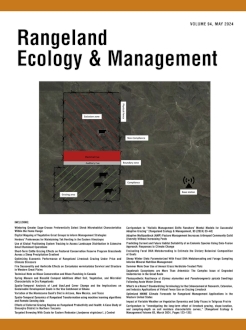In temperate landscapes, habitat selection is constrained by resource availability during winter. Most studies of habitat selection by greater sage-grouse (Centrocercus urophasianus “sage-grouse”) have focused on breeding and summer rather than winter habitat. We focused on winter microhabitat when available habitat was influenced by snow conditions. Our objectives were to 1) identify what microhabitat characteristics sage-grouse select during winter and 2) evaluate whether sage-grouse selected microhabitat at the home range (third order) or the population range (second order) scale. In summer 2020, we measured shrub characteristics and herbivore dung counts at 90 sage-grouse locations from the previous 2019/2020 winter in northwest Colorado and southcentral Wyoming and compared them with 90 paired, available locations within sage-grouse home ranges and 90 unpaired, available locations within the population range. We found strong support for sage-grouse selecting for winter microhabitat at the home-range scale because we observed similar differences in shrub characteristics between sage-grouse use locations and available locations at both scales and no differences between randomly available habitat. Compared with available locations within home ranges, wintering sage-grouse selected areas of 57.1% greater big sagebrush (Artemisia tridentata spp. Nutt.) canopy cover, 23.7% taller big sagebrush, and 110.6% more visual obstruction at use locations. Sage-grouse dung piles were 7.1 × higher at used locations than available locations within home ranges, further indicating that habitat use was less random within home ranges. In winter, microhabitat selection focused on higher cover and height of big sagebrush like previous observations from nearby studies of microhabitat selected by sage-grouse during nesting and brood-rearing.
BioOne.org will be down briefly for maintenance on 12 February 2025 between 18:00-21:00 Pacific Time US. We apologize for any inconvenience.
How to translate text using browser tools
17 May 2024
Wintering Greater Sage-Grouse Preferentially Select Shrub Microhabitat Characteristics within the Home Range
Caitlyn P. Wanner,
Aaron C. Pratt,
Jeffrey L. Beck
ACCESS THE FULL ARTICLE

Rangeland Ecology and Management
Vol. 94 • No. 1
May 2024
Vol. 94 • No. 1
May 2024
Centrocercus urophasianus
dung counts
Home-range-scale microhabitat selection
Population-scale microhabitat selection
shrubs
winter habitat




